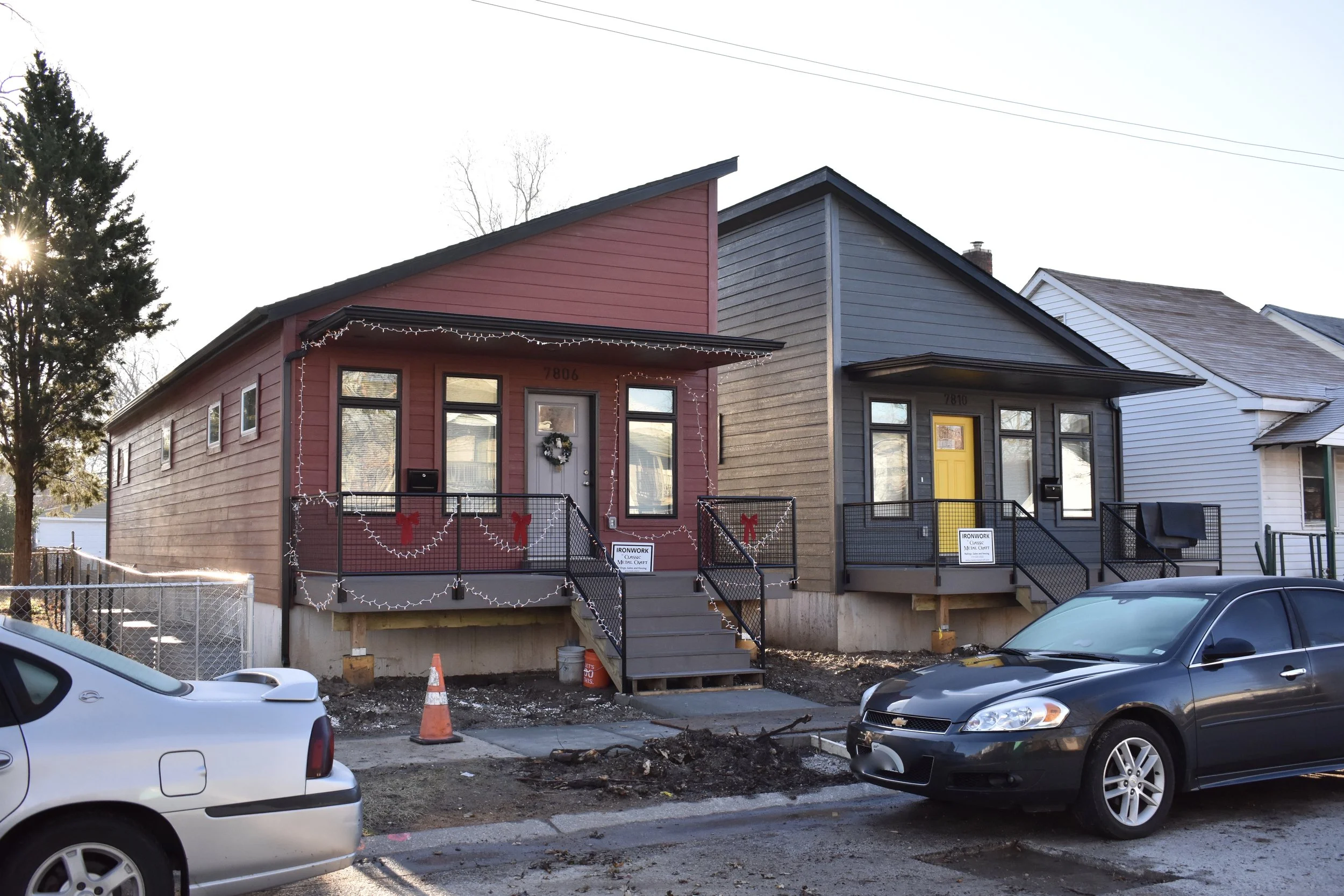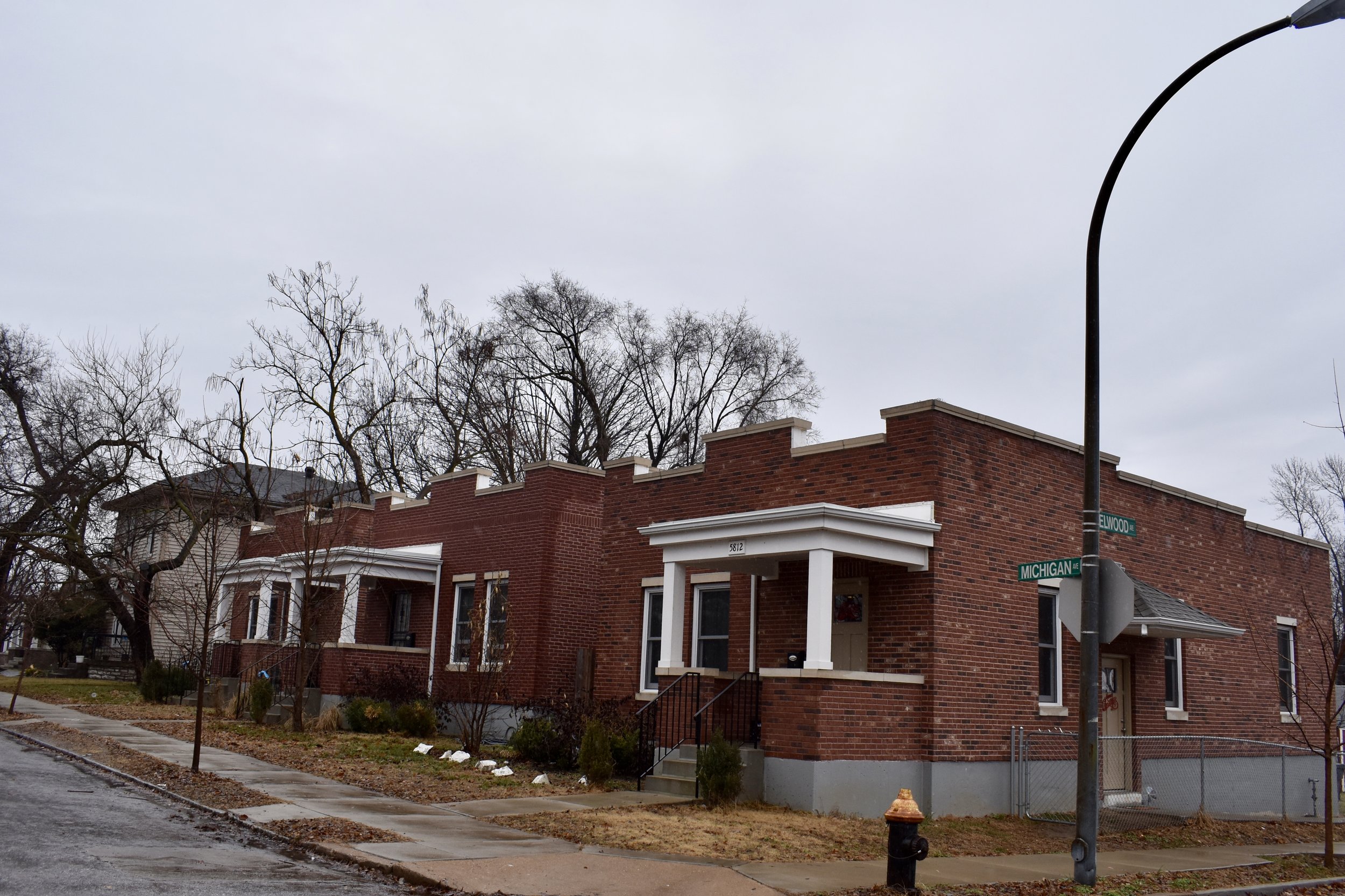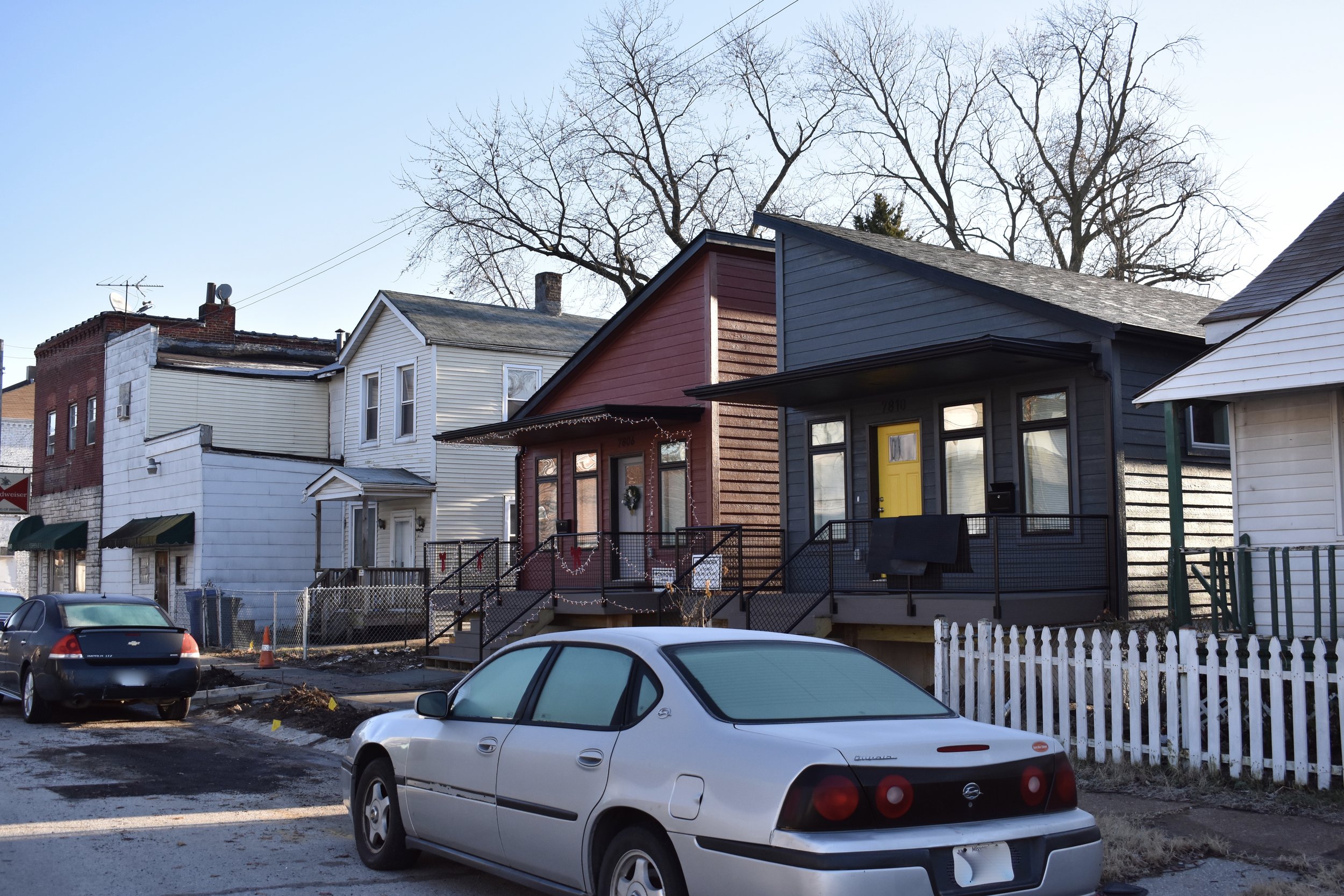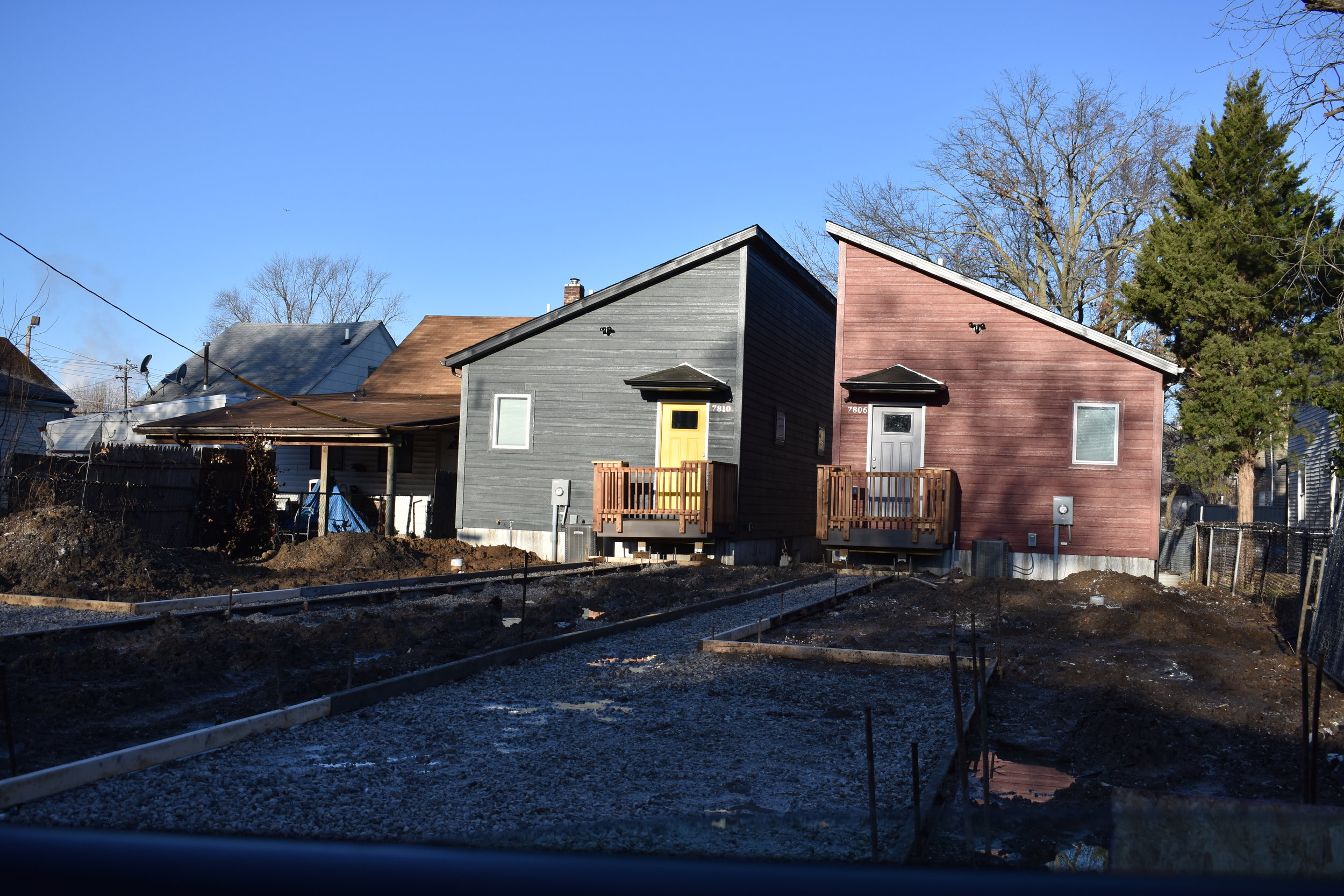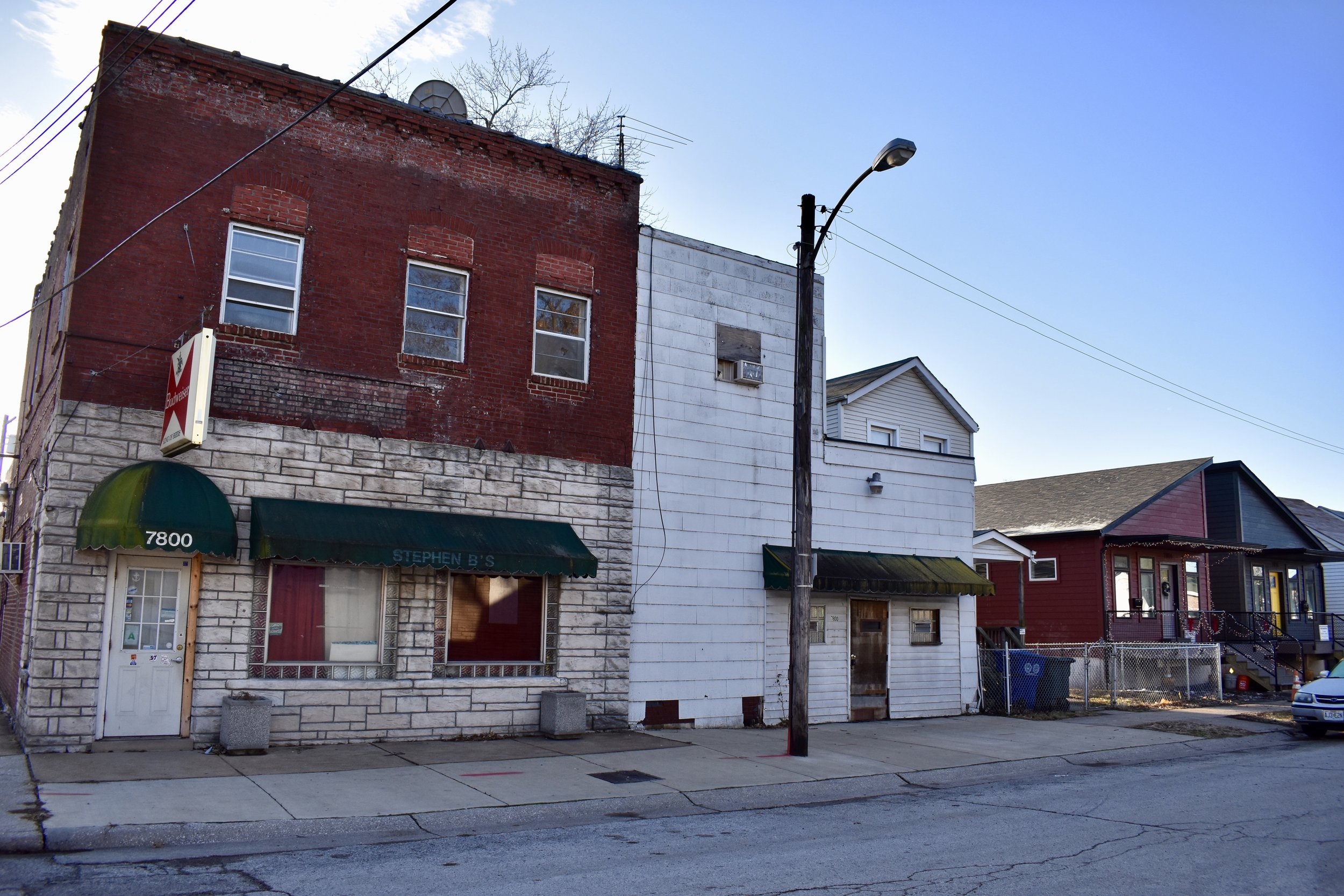Some projects seem perfect, hitting all the right notes.
I first read about a series of new Habitat for Humanity homes on NextSTL back in October, 2018:
“The homes will only be a single story, but the completed basement square footage will provide ample space for the additional bathroom and bedrooms. The exterior of these new homes recalling the flounders of Saint Louis’ past. But, adds Powers, “[these will be] a modern take on a historic and charming style. […]not attempting to replicate, but instead compliment the existing conditions [on Virginia].” These bungalow flounders will present that take via two different options for fiber-cement cladding.
While Habitat for Humanity does have income guidelines and other qualifying paperwork for potential homeowners to complete as part of the application process, they encourage all with interest to reach out to their Saint Louis organization.”
The Habitat for Humanity building activity in the Carondelet Neighborhood and the Patch are great examples of positivity and equity building right here in our fair city. I’ll build my case for why these are slam dunk projects.
Habitat For Humanity is a respected non-profit who has done nice work in other parts of the city
Affordable new homes!
New construction on the smaller side that is interesting and varied
City-owned lots being passed off to another entity
Carondelet and the Patch are great neighborhoods to live, with lots of services nearby, so quality of life is certainly attainable here
Carondelet is likely in its “white-flight” phase, so residents settling down here will be important
Habitat for Humanity is a non-profit, Christian organization focused on providing new construction for lower income residents. They are rooted down in St. Louis, with their headquarters located at Chippewa and South Grand in the former National Supermarket building. They’ve been around for 32 years and in July, 2018, broke ground on their 400th home in the region, including 10 new homes in the Peabody-Darst-Webbe Neighborhood.
Per Habitat’s website, they claim:
“Safe, affordable housing is the bedrock of a family’s economic and social stability. Habitat for Humanity Saint Louis provides an opportunity for families living in substandard rental housing with the opportunity to help build and then purchase a home they can afford to maintain.”
Their model:
“Habitat for Humanity offers a homeownership opportunity to families living between 25 - 50% of the area median income, who are generally unable to obtain conventional house financing. In addition to purchasing their home and paying an affordable mortgage, partner homeowners contribute 350 hours of "sweat equity" on the construction of their home or another Habitat Saint Louis home and taking educational courses to help them succeed at owning a home.”
Per city-data, the median income of Carondelet is lower than the State of Missouri as a whole. So when you consider a household income of 25 - 50% the median for the area, that equates to a range of $9,953 - $19,908. The Missouri minimum wage is $7.85/hour (although in St. Louis, it’s more like $10-11 per all my teenager’s job hunting experiences). So if you work 40 hours/week, 50 weeks/year that is $15,700 annual gross income. You are eligible for these homes.
Carondelet and the Patch are excellent choices of neighborhoods to focus on. It is stable and living is convenient, close to highways, main arteries, quality grocery stores, schools, services and other amenities within walking distance or a short drive. While most of Carondelet is still stable, it is changing when it comes to race. Per the 2000 Census count, Carondelet was 74% white and 19% black, losing 5% of its population from the 1990 count. The 2010 Census showed that the neighborhood was now 57% white and 34% black. Some call this white flight. The neighborhood has changed for sure. And as we know too well, when white flight occurs, like it did in other parts of the city, the effects can be damaging…even staggering. My hope is that providing nice homes for the working class, we will bring stability to an area that may be in flux.
The homes themselves are small, which means lower utility bills and lower maintenance costs. Some are being built on city-owned vacant lots. We remove property from the city rolls, provide infill and bring people to a formerly dead area.
The home design is not boring, uninspired, suburban boredom. In fact, they are beautiful. They are narrow and make the most of the lots. You know I love me some shotguns (although these are not technically shotguns). Some are even flounders, and I LOVE flounders.
We took a drive around Carondelet today to check out these sites, sorry about the gloomy tone, it has been grey and rainy that last week or so.
First, the finished Habitat homes, now owner-occupied fit in so well, I blew past them at first because they fit in so well, you can’t even tell they are new construction.
This has been an empty lot that was eventually used for gardening, here’s a Google street view from 2009.
And to anyone who wants to fight me on the “community gardens” are more important than homes, we are not at a place where open land is a premium. This is not New York, there are opportunities on every turn for pop-up gardens. Those are good interim uses of space, but you can garden anywhere. The community PLACE is the thing that matters, but that too can happen anywhere…I’ll take people over cucumbers anytime. The cucumbers can grow in a 4x4 raised bed anywhere. People need more.
The NextSTL article reported that there was “additional funding” for the full brick wrap on these. Wow, well done all!
There is another narrow home built on a corner lot at Vermont and Steins Street with a handsome exterior color to blend with the brick in the area. This lot has been vacant for years.
7600 Vermont Avenue
Now, here’s my favorites…these new homes on the 7800 block of Virginia Avenue are side by side flounders. They are long and narrow, filling in vacant lots, maximizing the land, bringing density.
These are complete or near complete, as evidenced by the Christmas lights on the from porch. This is exactly the kind of infill that works on all levels.
A couple street trees in front of these properties will give it an A+ in my book.
A great project for 2018, let’s home Habitat continues to work in the city and bring more people affordable new housing.

